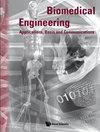HEURISTIC-ASSISTED ADAPTIVE HYBRID DEEP LEARNING MODEL WITH FEATURE SELECTION FOR EPILEPSY DETECTION USING EEG SIGNALS
IF 0.6
Q4 ENGINEERING, BIOMEDICAL
Biomedical Engineering: Applications, Basis and Communications
Pub Date : 2023-12-12
DOI:10.4015/s1016237223500369
引用次数: 0
Abstract
The word epilepsy is related to a neurological disease occurred by abnormalities of brain neurons. Timely detection of epilepsy is helpful for patients to decrease the mortality rate. To detect seizures, the Encephalogram (EEG) signals are analyzed based on monitoring the conditions of patients, and seizures can be detected from the EEG signal at appropriate times. The manual detection from the EEG signal requires more time for detecting the seizures and also it needs domain knowledge. The miss detection is eliminated by improving the classification performance in automatic epilepsy detection. Nowadays, deep learning models have not been greatly harnessed in the detection of epileptic seizures due to inappropriate descriptions of time-domain signals and sub-optimal classifier design. The aforementioned issues are combated by the novel Adaptive Hybrid Deep Learning (AHDL) approaches for epilepsy detection using EEG signals. Initially, the required EEG signal is collected from benchmark datasets. The collected signals are subjected to a signal decomposition phase that is accomplished by five levels of decomposition using Dual-Tree Complex Wavelet Transform (DTCWT), where the parameters are tuned by Improved Probability-based Coyote Optimization Algorithm (IP-COA). Further, the decomposed signal is given for feature extraction, where it divides the signal into two phases. In the first phase, the first feature set is obtained by using One-Dimensional Convolutional Neural Network (1DCNN), whereas in the second phase, the proposed model utilizes Auto Encoder (AE) to provide the second feature set. These resultant features are getting fused and the optimal feature selection process is found, where the features are obtained optimally by the IP-COA. Finally, epilepsy detection is accomplished with the aid of proposed AHDL with both Radial Basis-Recurrent Neural Networks (RB-RNN), where the hyperparameters are optimized using IP-COA. Thus, the experimental results illustrate that the suggested model enhances the detection and classification rate.利用 EEG 信号检测癫痫的启发式辅助自适应混合深度学习模型与特征选择
癫痫一词与大脑神经元异常所导致的神经系统疾病有关。及时发现癫痫有助于降低患者的死亡率。为了检测癫痫发作,需要在监测患者病情的基础上分析脑电图(EEG)信号,并在适当的时候从脑电图信号中检测出癫痫发作。人工检测脑电图信号需要更多时间来检测癫痫发作,而且还需要领域知识。通过提高癫痫自动检测的分类性能,可以避免漏检。目前,由于时域信号描述不当和分类器设计不够理想,深度学习模型在癫痫发作检测中还没有得到广泛应用。利用脑电信号进行癫痫检测的新型自适应混合深度学习(AHDL)方法可以解决上述问题。首先,从基准数据集收集所需的脑电信号。收集到的信号经过信号分解阶段,该阶段使用双树复小波变换(DTCWT)进行五级分解,并通过基于改进概率的土狼优化算法(IP-COA)对参数进行调整。然后,将分解后的信号用于特征提取,将信号分为两个阶段。在第一阶段,通过使用一维卷积神经网络(1DCNN)获得第一个特征集,而在第二阶段,拟议模型利用自动编码器(AE)提供第二个特征集。这些生成的特征将被融合,并找到最佳特征选择过程,其中 IP-COA 获得了最佳特征。最后,在 AHDL 的帮助下,利用 Radial Basis-Recurrent Neural Networks(RB-RNN)完成了癫痫检测,并使用 IP-COA 对超参数进行了优化。因此,实验结果表明,建议的模型提高了检测率和分类率。
本文章由计算机程序翻译,如有差异,请以英文原文为准。
求助全文
约1分钟内获得全文
求助全文
来源期刊

Biomedical Engineering: Applications, Basis and Communications
Biochemistry, Genetics and Molecular Biology-Biophysics
CiteScore
1.50
自引率
11.10%
发文量
36
审稿时长
4 months
期刊介绍:
Biomedical Engineering: Applications, Basis and Communications is an international, interdisciplinary journal aiming at publishing up-to-date contributions on original clinical and basic research in the biomedical engineering. Research of biomedical engineering has grown tremendously in the past few decades. Meanwhile, several outstanding journals in the field have emerged, with different emphases and objectives. We hope this journal will serve as a new forum for both scientists and clinicians to share their ideas and the results of their studies.
Biomedical Engineering: Applications, Basis and Communications explores all facets of biomedical engineering, with emphasis on both the clinical and scientific aspects of the study. It covers the fields of bioelectronics, biomaterials, biomechanics, bioinformatics, nano-biological sciences and clinical engineering. The journal fulfils this aim by publishing regular research / clinical articles, short communications, technical notes and review papers. Papers from both basic research and clinical investigations will be considered.
 求助内容:
求助内容: 应助结果提醒方式:
应助结果提醒方式:


